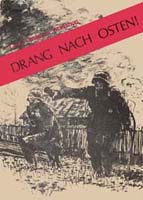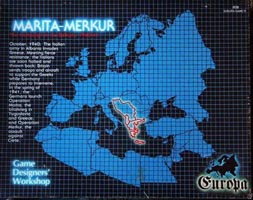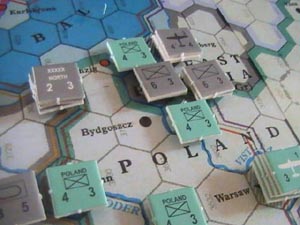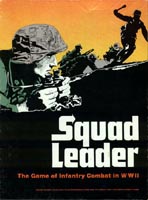WARGAMESOSD Europa - SPI - GDW - GRD - GMT - Avalon Hill |
Intoduction to Wargames - Operations - Strategy - Defence
Wargames
have been a source of fascination for many people for centuries, just as war itself
has been examined and re-examined over and over again, both in the light of history
and in the area of strategy and tactics. Decision making and implied expertise
or brilliance has been both celebrated and regailed. The problem is that when
you look back over history, unless you can understand fully the situation in which
certain decisions were made, it can be very frustrating for the tactician who
wants to appreciate how certain wars, and the decisons made during those bitter
conflicts, progressed to certain victory or certain defeat. Take the Battle of Waterloo for example, how that swung from defeat to victory for the British, and how in the Second World War chance intelligence such as deciphered enemy messages led to the preparations north-west of Midway. And what about those ancient battles that were so eminently recorded by the historians of the past? Wargames are as ancient as the wars themselves, and wargames are as integral a part of military life as is the making of war itself. This website is dedicated to WWII Wargames, and as such re-examines the strategy and tactics employed in that great and terrible conflict. In particular, the website looks not at the more noble forms of re-enactment, or the building and painting of miniature armies, but at those games which employ small die-cut counters to represent armies, divisions, and brigades etc. |
 | The
large-scale WWII wargame came into being with the publication of GDW's 'Drang
Nach Osten!' published in 1973. It is a historical game/simulation of the German
invasion of the Soviet Union on 22 June 1941 that lead to the gates of Moscow
and ultimately to the destruction of the Wehrmacht and the fall of the Third Reich.
Drang Nach Osten! is a complete game of the largest invasion in history, but may
be incorporated into the larger series of game/simulations collectively titled
Europa. Drang Nach Osten! carries the Russian campaign from June 1941 to the end
of the Soviet winter counteroffensive in March 1942. Unentschieden (Europa II)
continues the campaign through 1944-45. |
In the mid-70's to the mid-90's these particular games grew in abundance and it is in this area that this website explores, not only because of their tactical brilliance, but often because of their sheer scale and imagination. In truth, playing these games brings a new meaning to the historical concept of wargaming, and to the understanding of the huge significance that war has played in either defining a people, or in shaping the political map of our contemporary world. Expansion of wargames led to a number of games being grouped together to form a consistent gameplay pattern, GDW's 'Europa' series and Avalon Hill's 'Advanced Squad Leader' (ASL) typify these.The illustration opposite shows Avalon Hills's original 'Squad Leader' game which was published in 1977. Two 'gamettes' were added to this. ASL followed in 1985, and in fact, had a simpler game system despite the 'Advanced' decription, than its earlier counter-part. |
|
 | The other thing about them is that that they fall into two distinct levels of play. For example, Europa is a game played at army, corps and division level, whereas ASL is an example of a squad level game, where individual platoons use a variety of weapons. One game looks at the overall strategy of a campaign whilst the other takes play down to street level, or house to house combat and so on and many players will have a preference for one type of game or the other. The 'Europa' series had its origins in 1973 with the publication of 'Drang nach Osten' (Rush to the East), which covered 'Operation Barbarossa' and the Soviet counter-attacks of 1941-42. The illustration to the left is the third game in the series and was first published in 1979, and covers the Balkan campaign from November 1940 to June 1941. The illustation is from the second release of this game. |
The
wargames are played on maps that have a hexagonal grid, individual boxes are called
hexes, hexes control movement and types of terrain have movement costs, with implications
for strategy and defence. Besides this, individual counters have separate combat stengths, defence and movement costs. Most counters contain NATO symbols that represent either infantry, tank regiments, artillary or combat-motorized (c/m) units or divisions, to such an extent that a game can contain maybe twenty or even thirty different types of units. Orders of Battle (OB) control the forces and in the main represent historical deployments. The illustration to the right is from the 'Case White' scenario from SPI/TSR's WWII ETO (European Theatre of Operations). |  |
wargames.wilkey.org.uk |
